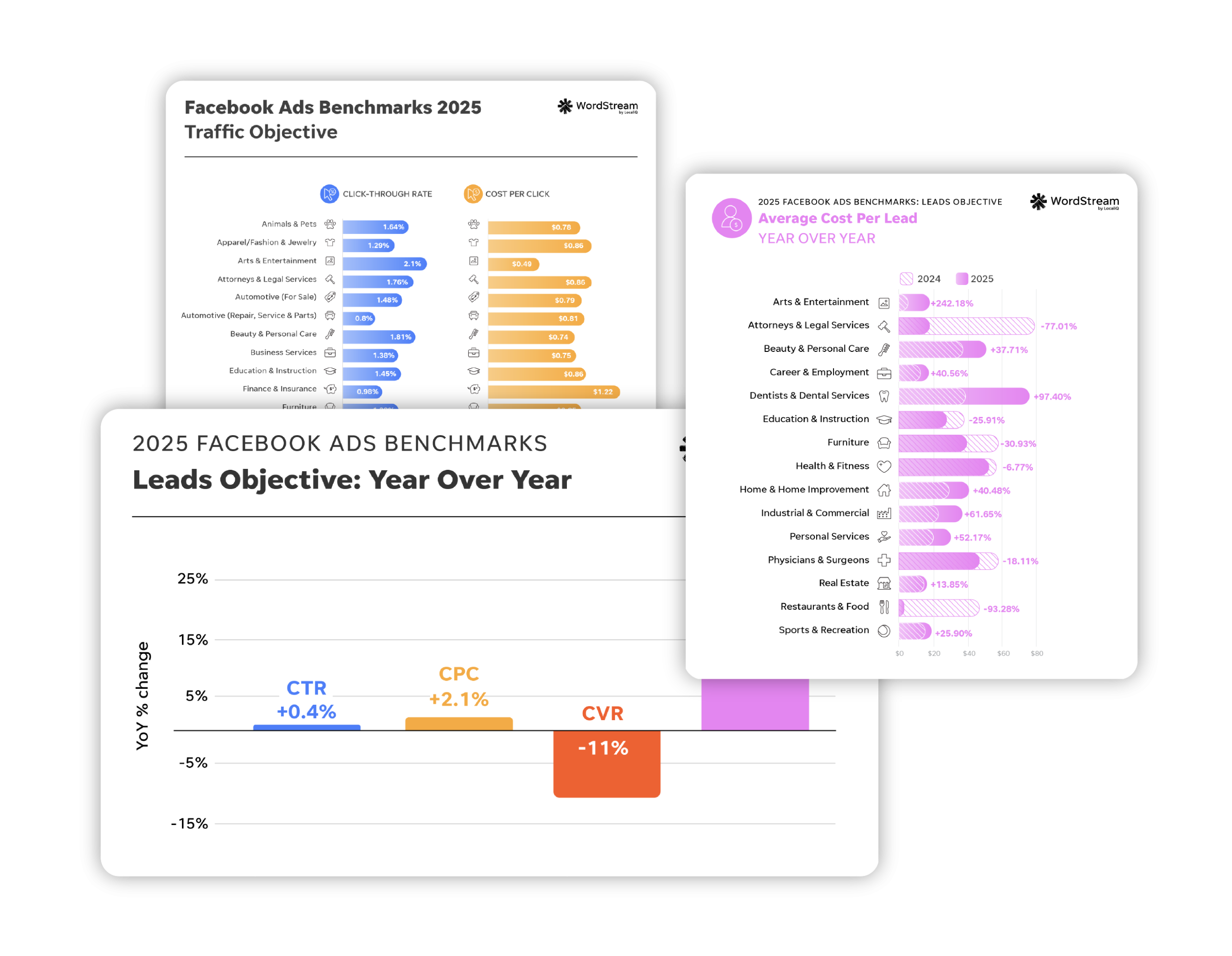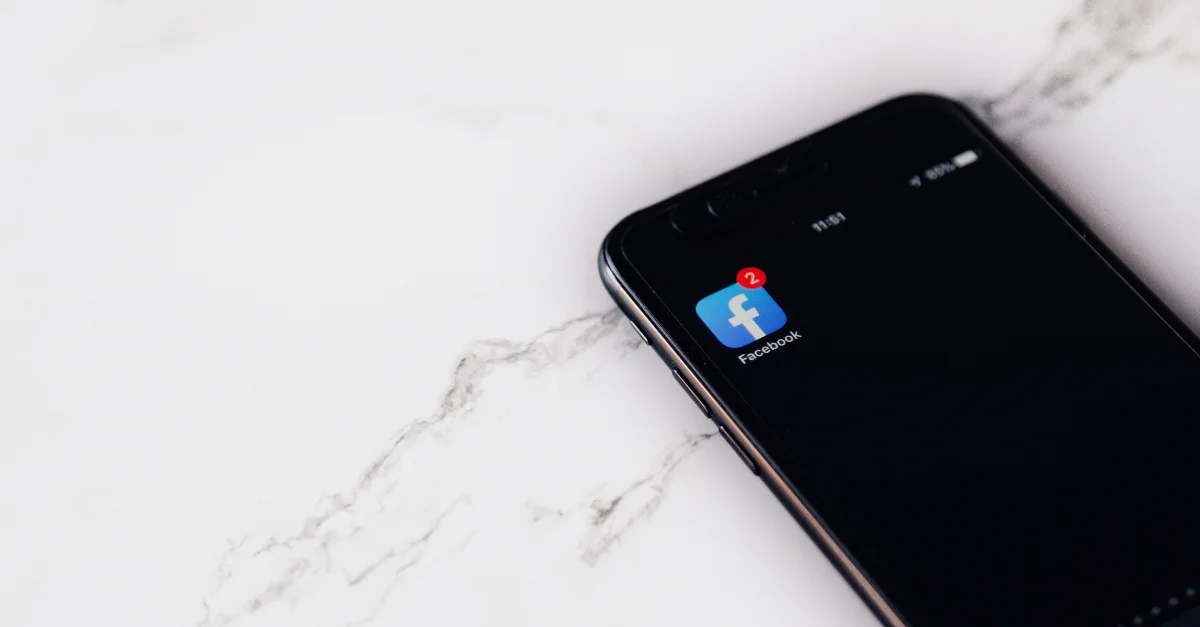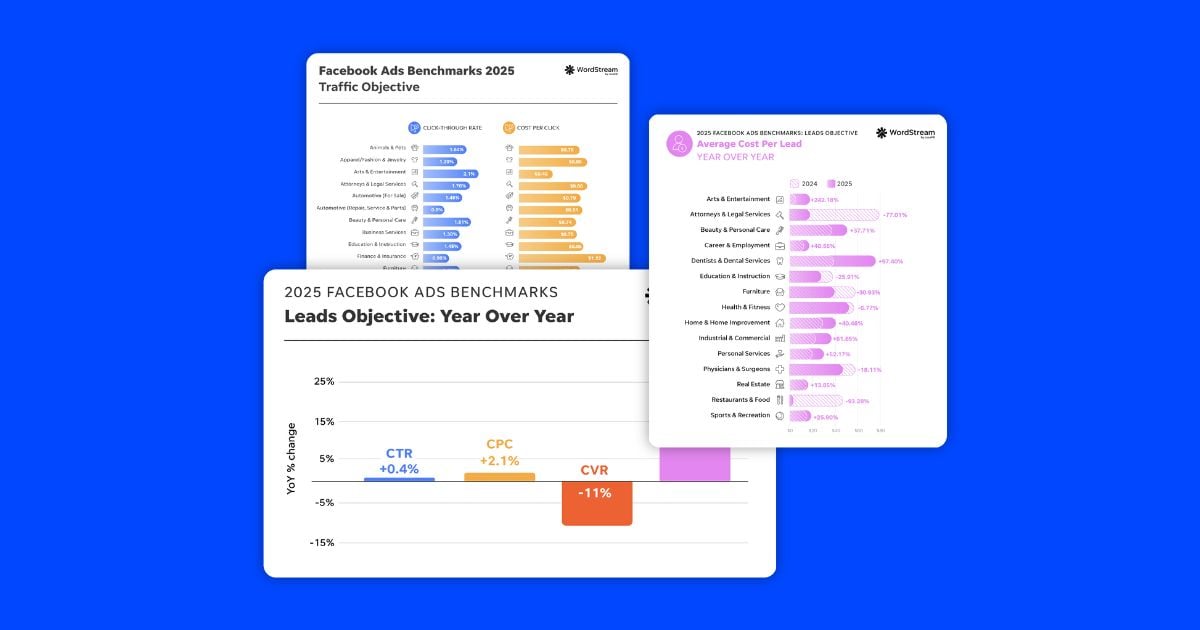As promised in my previous post, I am back with part two on how to leverage Facebook objectives to create a cross-funnel campaign strategy. If you didn’t have the chance to catch part one, here are the main points you need to know:
- Facebook offers three campaign objective options for advertisers: awareness, consideration, and conversion.
- It is crucial that you don’t overlook your objective, optimization settings, bid strategy, or budget selections upon campaign creation.
- The Facebook ad auction relies on algorithmic learning around these settings to make decisions. You need to identify the right signals and track significant data to enable this algorithm to efficiently optimize according to your marketing goals.
And now that we are up to speed with part one….
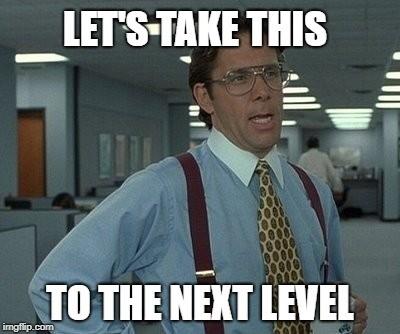
For part two, I will walk you through the six key steps to building out your full-funnel advertising strategy on Facebook. Let’s get started!
Step #1: Understand how your marketing funnel works
Before we get into tactics on Facebook, let’s quickly talk about the marketing funnel. This funnel is the path that users take during their journey with your marketing activities. There are various ways to define and break down your marketing funnel, but it typically looks something like this:
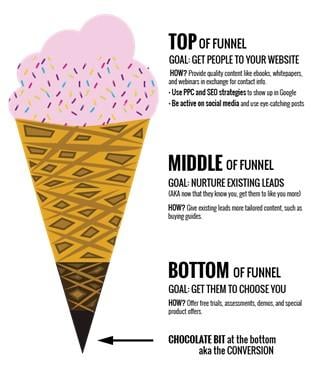
It’s important to recognize and understand what your marketing funnel looks like in order to optimize your cross-funnel strategy. To get there, start by asking yourself these questions:
- What are the sources and channels of brand discovery for your prospects?
- What are the milestones in your prospect’s journey? Here, think about number of touchpoints you are having with your prospects (website visits, form fills, types of actions, etc.).
- What offers can you pair to these milestones? To match your prospect’s intent through your marketing funnel, it’s extremely valuable to have different types of offerings. Consider a white paper for new prospects versus a free trial for those further down the funnel.
- How long does it take for a prospect to travel from top of funnel to bottom of the funnel?
- Where are the leaks in your marketing funnel? Consider areas where you could lose your prospect.
Once you’ve thought through each of these questions, you’ll be in the right mindset to get started.
Step #2: Structure your Facebook Ads account
Now that you’re thinking about how your marketing funnel is structured, it’s time to talk about your Facebook account. The way you structure your account can make or break your ability to effectively manage and optimize your campaigns to your business goals.
To get started, let’s do a quick refresh. Here’s an example of what a Facebook ad account looks like:
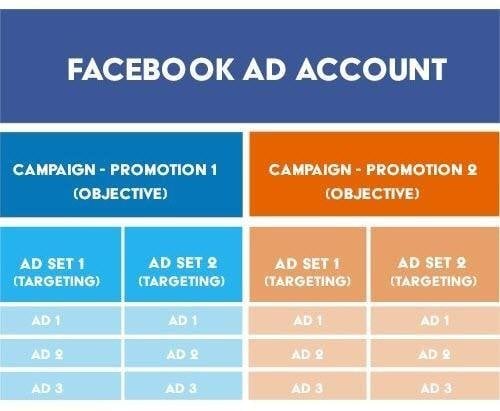
Think of your Facebook campaigns as the shell for your ad sets. Aside from your objective, the majority of decisions are made at this ad set level on Facebook. This includes your targeting, optimization settings, bid strategy, and budget. And within each ad set, you have your ads, in which you can differentiate your offer, creative, and messaging.
If you’re reading this post, you’re interested in targeting prospects across your funnel through Facebook so we’ll talk through an account structure that matches your marketing funnel. In order to accomplish this, I would recommend building out your campaigns in accordance to each stage in your marketing funnel. Depending on what your marketing funnel looks like and how granular you want to get, the number of campaigns will vary. To give you an idea of what this would look like, I’ll provide a simple example:
Campaign 1: Top of funnel (TOF)
Campaign 2: Middle of funnel (MOF)
Campaign 3: Bottom of funnel (BOF)
With this structure, your first view in ads manager will be a clear representation of how much you are investing and how your relative KPIs are tracking across each stage of the funnel. Next, within your campaign, you should use your ad sets to test your offers and audiences. Here’s an example:
Ad set 1: Offer 1 & Audience 1
Ad set 2: Offer 1 & Audience 2
Ad set 3: Offer 2 & Audience 3
Ad set 4: Offer 3 & Audience 4
Now, within your ad set view, you can compare performance to understand how you should adjust your budget allocation or test new offers and audiences within that funnel stage.
Lastly, within each ad set, you have your ads. This is the perfect place to test out different creative, ad formats, and messaging within your ad set. For example:
Ad #1: Offer > Creative Variation 1 > Copy Variation 1
Ad #2: Offer > Creative Variation 1 > Copy Variation 2
Ad #3: Offer > Creative Variation 2 > Copy Variation 1
Ad #4: Offer > Creative Variation 2 > Copy Variation 2
As evident in my examples above, your naming convention will also be key to transparent reporting and effective account management. By clearly naming your campaigns, ad sets, and ads, you will be able to easily identify the component and make decisions without having to drill into each ad set or ad.
In summary, a well-organized ad account is crucial to successfully getting started with your cross-funnel strategy on Facebook.
Step #3: Set objectives based on the funnel
Now, that your campaigns are mapped out by funnel stage, you should be able match up the proper objective as offered by Facebook:
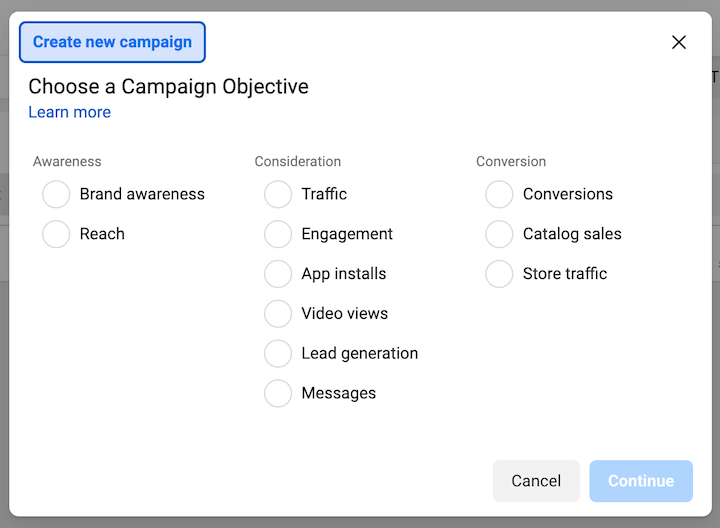
Here is a guide to reference when making your objective decisions based on your marketing funnel:
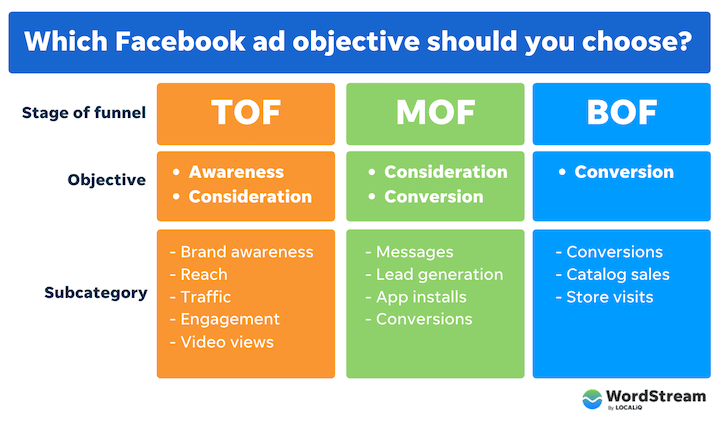
Step #4: Select your targeting types
In order to reach your campaign’s objective, you need to understand what targeting types and audiences are most appropriate for each ad set. Thankfully, Facebook offers a multitude of targeting options for advertisers. These options enable you create audiences that range from broad to specific:

These audiences can be sourced directly from Facebook’s core audience options (demographics, interests, behaviors) or from your own data (website visitors, custom audiences, lookalike audiences or LAL, etc). As your prospect moves down the funnel, your targeting should become more segmented as you are targeting more qualified users.
To help you decide which audiences to use in each funnel stage, here are a few recommendations:
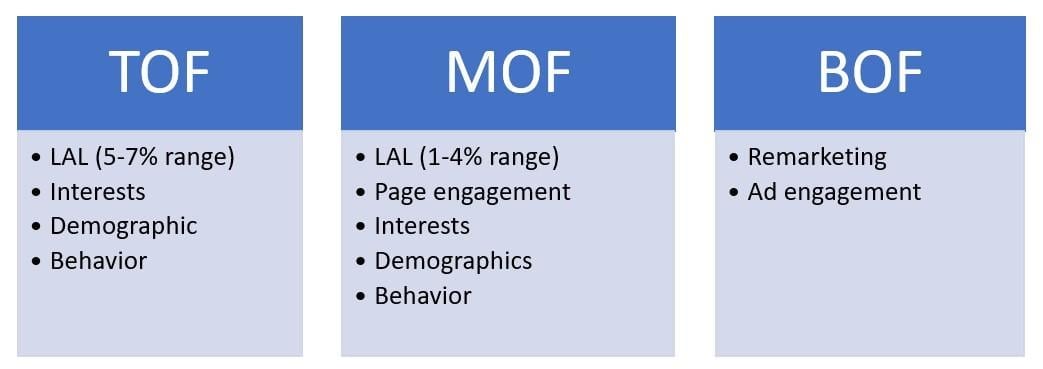
As you can see in the chart above, there is crossover across funnel stages. It’s important to note that the key here is to narrow down your audience. Take the lookalike recommendations, for example. At the TOF, you should widen up your audience range, allowing the algorithm to target a larger base of potential prospects. Then, when you get to MOF ad sets, you should narrow down your range to ensure that you have a closer group of qualified, potential prospects.
You should also consider employing exclusionary audiences across your ad sets. This way, as the prospect moves through the funnel, they are not continuing to see the ads from their previous stage. This will help you control wasted spend and improve the prospect experience.
Step #5: Leverage engagement audiences
What better way to move prospects through your marketing funnel on Facebook than using engagement audiences? Engagement audiences allow you to reach people who have previously interacted with your page. Facebook currently offers six options for your engagement audience:
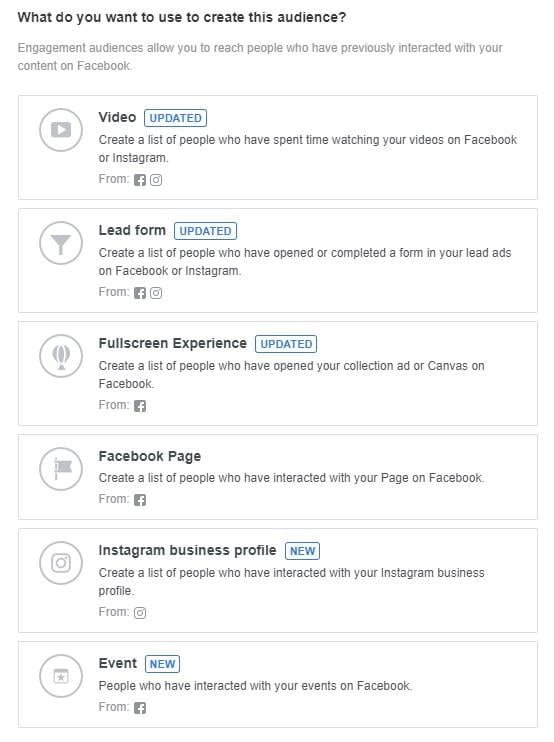
Here’s an example of how you can use engagement audiences to boost your funnel strategy from start to finish:
Step 1: Using an awareness campaign objective and broad audience targeting, reach potential prospects with an engaging video.
Step 2: Using a consideration campaign with a lead generation objective, target the individuals who engaged with the video in step 1 by promoting a piece of content through a lead-gen ad.
Step 3: Build out a conversion campaign to target the users who completed this lead ad and entice them to convert on a product-centric offer, moving them to the bottom of your funnel.
Added bonus: Engagement audiences are the perfect targeting type to leverage your organic reach within your paid campaigns. This provides an opportunity to collaborate with your team and pair your organic and paid efforts. Within our very own campaigns, we’ve found that engagement audiences lead to a lower cost per acquisition.
Step #6: Optimize settings & conversion events
As I mapped out in part one, you won’t be able to achieve your marketing goals if you’re not implementing the right settings, which includes your conversion event and optimization for ad delivery settings.
The conversion event is only applicable for your ad sets that fall under a conversion campaign. This is because a conversion objective relies on outside signals (through your pixel) to fuel optimization. Therefore, when it comes to your TOF campaign, you don’t need to set a conversion event as the algorithm is able to deliver based on internal signals.
However, for your MOF and BOF campaigns that are set to conversion, you will be asked to select a conversion event. You should ensure that you select the appropriate conversion event based on your objective and offer. If you are promoting a whitepaper in your MOF campaign, you should select a conversion event that registers a successful download. On the other hand, you are likely promoting a higher value offer in your BOF campaign, which means your conversion event should reflect this goal. For advertisers alike, it’s not always easy to drive a significant volume of BOF leads. Therefore, if you are struggling to reach your goals, you should consider selecting a leading signal for your conversion event so that the algorithm receives sufficient signals during its learning period.
The optimization for ad delivery setting is where you tell the algorithm what you see as success for your ad set. As we’ve talked about through this post, your goals vary across each funnel, so it’s important to make this known within your optimization for ad delivery. Here’s an example of the appropriate settings depending on your funnel stage:
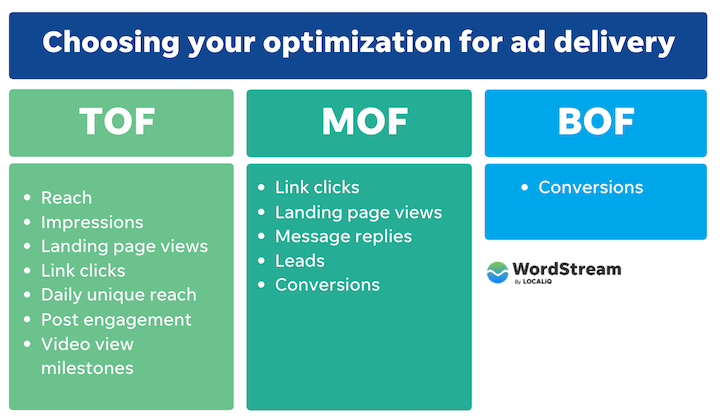
See results with your funnel-based Facebook strategy
Facebook provides an excellent opportunity for advertisers to capture new prospects and move existing leads through your marketing funnel. By following the six steps mapped out in this post, you will have a promotional strategy that delights prospects and maximizes your advertising results.
Once you are running with your cross-funnel strategy, you should continue to iterate by testing new audiences, offers, and creative to optimize and scale your account. Before you go, take a look at our Facebook Grader today and see how your Facebook ads can improve today!

